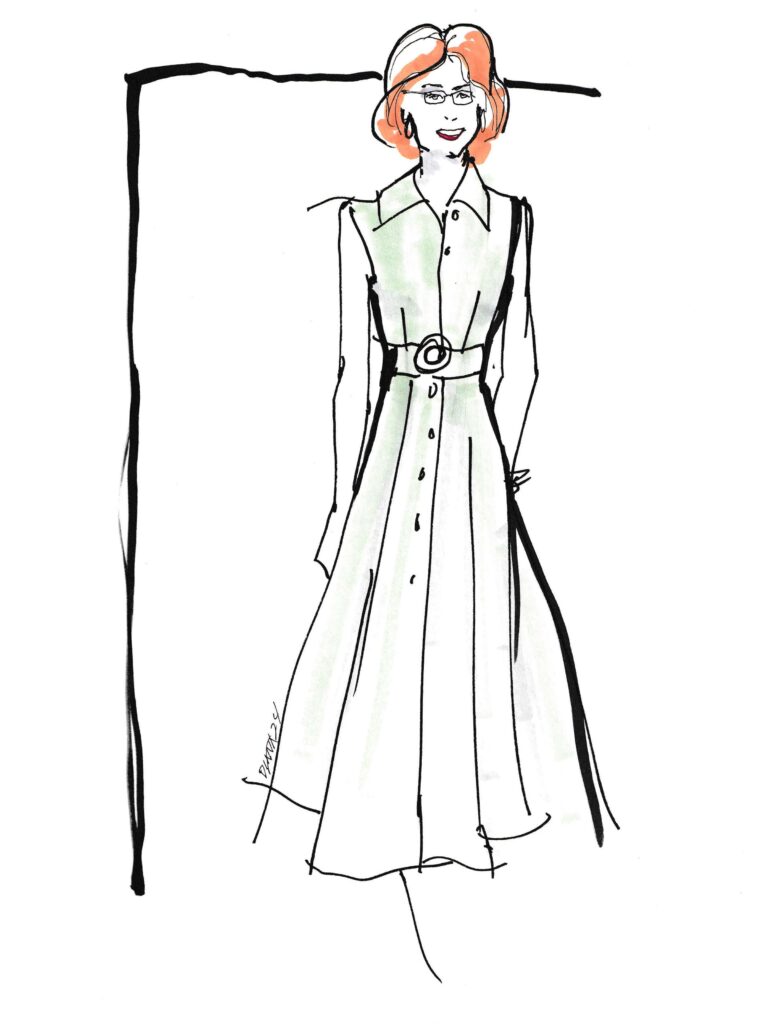When we think of a person undergoing gender transition, we might imagine someone who embodies courage—a person who faces uncertainty, steps into the unknown, and chooses to live authentically despite the risks. It’s easy to picture a confident and fearless individual who confronts the challenges of transitioning head-on.
However, the reality of this journey often includes facing profound fears and doubts, much like a warrior contending with metaphorical dragons.
These “dragons” aren’t the fantastical creatures of legend, but they are just as real: fears of rejection, discomfort, discrimination, and the anxiety over physical and emotional changes.
In a world where external and internal challenges seem daunting, how does one begin to overcome these fears? And, perhaps even more importantly, what if the right choice for you is to stop? There’s power in realizing that it’s okay to adjust your path and that living authentically doesn’t require a single narrative.
Facing the Dragons of Transition Transitioning from male to female can feel like entering a battlefield.
There are obstacles to be confronted—some external and societal, others deeply personal. These “dragons” might include:
• Fear of Rejection: Worrying about losing family, friends, or professional opportunities because of your transition.
• Fear of Discomfort: Facing potential physical pain from medical interventions or the social discomfort of living openly in a world that may not fully understand.
• Fear of Regret: The anxiety that comes from wondering whether the path you’re taking is truly right for you or if it might lead to a different kind of struggle.
• Fear of the Unknown:
Not knowing how your body will change, how people will react, or how your life will evolve as you embrace your true identity. These fears can be overwhelming, but they don’t have to be paralyzing.
The journey is not just about transitioning; it’s about learning to face, understand, and, when necessary, accept these fears.
Using ‘Fear Setting’ in Transition In the same way that many people use goal-setting to plan for the future, ‘fear setting’ can be a powerful tool for those navigating a transition.
Tim Ferriss’ concept of “fear setting” involves identifying the fears that hold you back, assessing their validity, and preparing to handle the worst-case scenarios.
For those considering or in the midst of transitioning, this process can provide clarity and reassurance.
How Fear Setting Works:
1. Identify Your Fears: Write down your biggest fears related to your transition. It might be fear of not being accepted, fear of medical complications, or fear of making irreversible decisions.
2. Explore the Worst-Case Scenarios: Imagine the absolute worst outcomes. What if your family rejects you? What if you regret a medical procedure? What if you decide that transitioning isn’t for you?
3. Plan Your Coping Strategies: For each worst-case scenario, outline how you would cope or reverse the situation. What resources are available? Who can you turn to for support? What might you do to adapt or heal?
4. Evaluate the Likelihood: Often, after laying out the worst-case scenarios, you may find that they are less probable or severe than you originally feared. Recognizing this can help diminish the power of those fears.
Acknowledging
When to Stop: A Different Kind of Courage Transitioning is not a linear process, nor is it a commitment that everyone must see through to the “end.” One of the bravest decisions you can make is recognizing when stopping is the best option for you. It’s important to understand that deciding not to proceed with transition—whether temporarily or permanently—is not a failure. Instead, it’s a valid choice that reflects a deep awareness of your own needs, boundaries, and well-being.
• Listen to Your Instincts: Transitioning isn’t an all-or-nothing endeavor. If you feel that you’re at a place where you’re comfortable—physically, emotionally, or socially—then honor that feeling. Sometimes, the act of pausing or stopping is a recognition that you’ve reached a version of your authentic self that feels right.
• Overcoming the Shame of Stopping: There’s often pressure, both internal and external, to “see it through” once you’ve started. However, it’s essential to release yourself from expectations—yours or society’s—and embrace the reality that your journey is yours alone. It’s a sign of strength to prioritize your mental and emotional health over the idea of a “perfect” transition.
• Define Your Own Success: Success is not about meeting a checklist or achieving a particular milestone. It’s about finding peace and authenticity, even if that means stepping back or choosing a different path. Embracing
Your Personal Journey, Fear and All Just as a warrior’s bravery doesn’t come from the absence of fear but from confronting it, transitioning doesn’t require you to be fearless. In fact, acknowledging your fears—whether they involve medical procedures, social acceptance, or doubts about your path—is an act of courage in itself.
These fears are valid and are part of the broader human experience. What matters most is how you respond to them.
Conclusion: Your Path, Your Power
The journey from male to female is not just about becoming but also about exploring who you are at each step.
Fear is not something to be avoided or eliminated; it’s a sign that you are challenging yourself and stepping into the unknown.
Use fear setting to assess your path, understand your fears, and make informed choices. And remember, if you find that continuing the transition no longer feels right, it’s okay to stop. There is no shame in saying, “This is enough for me.”
Living authentically isn’t about ticking off boxes but about feeling comfortable in your own skin—whatever that looks like for you. Your bravery lies in choosing the path that aligns with your truth, not with someone else’s expectations.
Dr. Gwen Patrone
You can find my books on Amazon and audio books on Audible














4 Responses
Thanks for this Gwen.
Your words are very supportive and helpful, no matter where we are in the transition.
Jocelyn
Gwen,
Sometimes fear can be like solid brickwall , is it even possible to see what is beyond it ? I agree you need to break down your fear into small pieces and try and tackle one at a time .
After 6+ years of transition I need to look back to review those fears , how many were true and how many false . Sorry to repeat myself but often we don’t know many of the answers until we make the decision and actually start to live it , the true and false fears soon reveal themselves .
I also agree there is no shame in stopping at any stage and even retracing your steps , there are no rules only what you can comfortably live with . I lived through a period of peer pressure mostly from my transgender friends , they can be helpful but also take care of the BS , what drives another transgender person’s life isn’t what drives yours . I very rarely contact my transgender friends , many of them choose to live in that transgender world , I see it differently , I live Teresa’s world as I don’t often think about being transgender on a daily basis .
For a while I considered myself a fraud , at one time transition meant hormones and surgery , I knew people who had gone through these stages but soon realised their lives were no different from mine in fact I appeared to be living a happier life in my transition than theirs . It’s easier for me to step back if I choose and at one time I thought I could comfortably do so especially to retain family contacts but it wasn’t to be . My GD proved severe enough to find the male part too painful to return to , saying NO to some is tough but in doing so it emphasises the truth of your actions . Officially changing my name was the game changer for me as I could legally travel and do many other things as Teresa , I now have a female marker , any misgendered moments can soon be corrected with my driving licence , passport or my voting identity .
Should we consider the downsides ? For me the fear is reaching an age where I may not be able to sustain the daily routine . I also realise there could still be problems if I was taken ill or was invloved in an accident , who would come and visit me and who would take care of me should the need arise , would I still be treated as Teresa and allowed to function as such ? Again these can only be fully answered if and when they occur .
Do I consider myself brave ? It’s been said more than once in fact the usual comment is , ” you have some balls to do what you do !” If you consider bravery it comes in small bits as you push the envelope , I often question why we have that need , is it to prove our conviction , to validate our actions or just pure adrenaline driven ? Possibly all three .
I know many of the questions remain a mystery , at one time I needed to know the answers , I wanted a plausible explanation for not only myself but as importantly for my family . I do feel we fall into the trap of overthinking it all , it’s so easy the think the World revolves around us . Very few people are born perfect we all have quirks , wiring in the brain is complex we just happen to have a misalignment of gender , all we can do is learn to live comfortably with it .
Thanks for making it clear that you don’t have to be shoved into someone else’s mold to be happy.
Micki
Gwen,
I love “Define Your Own Success.”
Each of us have what we define as success. For me, my success includes my nails, brows, legs, heels, and now jewelry. Don’t compare your ‘success’ to another person’s ‘success’, they may be working with a different set of parameters.
Cali
PS – Gwen – I hope you are doing well in your transition.